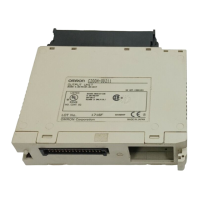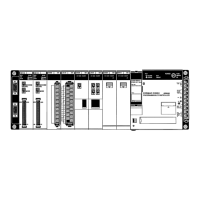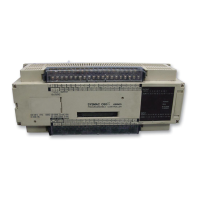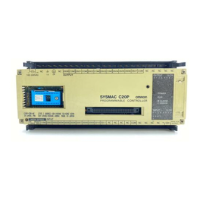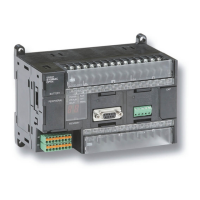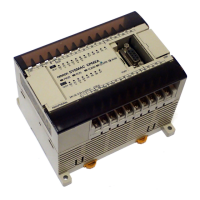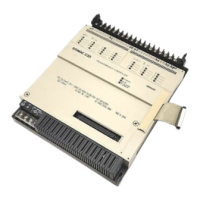185
5-18-7 4-TO-16 DECODER – MLPX(76)
S: Source word
IR, SR, AR, DM, HR, TC, LR
C: Control word
IR, SR, AR, DM, HR, TC, LR, #
Ladder Symbols
Operand Data Areas
R: First result word
IR, SR, AR, DM, HR, LR
MLPX(76)
S
C
R
@MLPX(76)
S
C
R
Limitations When
the leftmost digit of C is 0, the rightmost two digits of C must each be be
-
tween 0 and 3.
When
the leftmost digit of C is 1, the rightmost two digits of C must each be be
-
tween 0 and 1.
All result words must be in the same data area.
Description Depending
on
the value of C, MLPX(76) operates as a 4-bit to 16-bit decoder or
an 8-bit to 256-bit decoder.
4-bit to 16-bit Decoder MLPX(76)
operates as a 4-bit to 16-bit decoder when
the leftmost digit of C is 0.
The
hexadecimal value of the digits in S are used to specify bits in up to 4 result
words.
The specified bit in each result word is turned on, and the other 15 bits in
each word are turned off.
When
the execution condition is OFF
, MLPX(76) is not executed. When the exe
-
cution
condition is ON, MLPX(76) converts up
to four
, four-bit hexadecimal digits
from
S into decimal values from 0 to 15, each of which is used to
indicate a bit
position. The bit whose number corresponds to each converted value is then
turned
ON in a result word. If more than one digit is specified, then one bit will be
turned
ON in each
of consecutive words beginning with R. (See examples, be
-
low.)
Control Word The
digits of C are set as shown below
. Set the leftmost digit of C to
0 to specify
4-bit to 16-bit decoding.
Specifies
the first digit to be converted (0 to 3)
Number of digits to be converted (0 to 3)
0: 1 digit
1: 2 digits
2: 3 digits
3: 4 digits
Not used. Set to 0.
A value of 0 specifies 4-bit to 16-bit decoding.
Digit number:
3210
Data Conversion Section 5-18
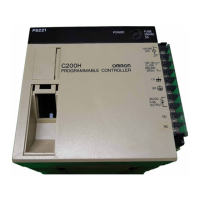
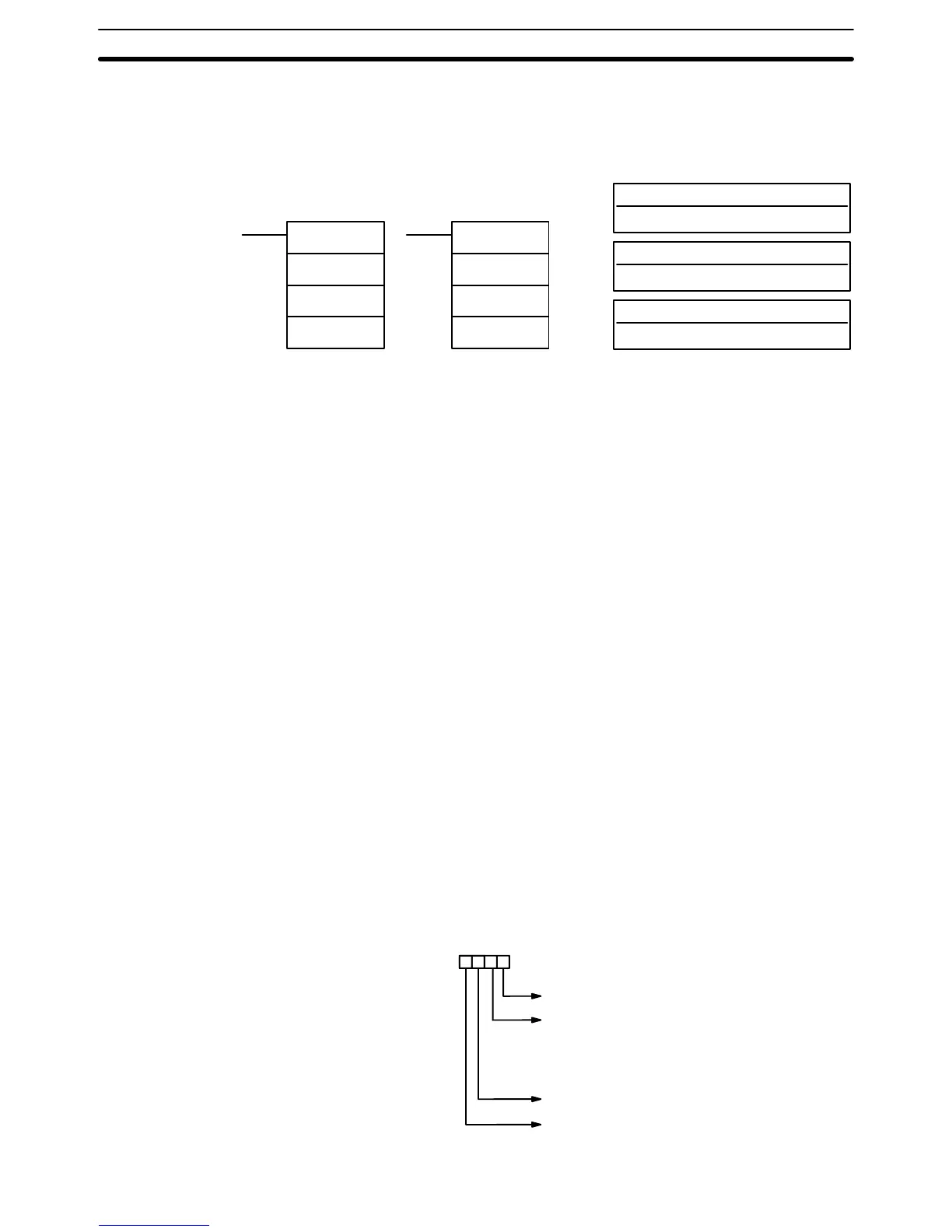